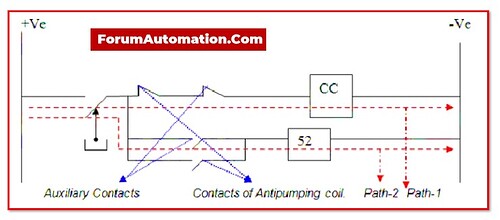The purpose of the anti-pumping mechanism used in electrical circuit breakers is to prevent numerous shutting and opening actions of the circuit breaker contacts from occurring in rapid succession.
It is a protection element that was created to ensure that the circuit breaker would operate in a secure and dependable functioning.
The anti-pumping mechanism avoids the contacts from instantly closing again if the fault situation is still present (or) has not been fully rectified after a circuit breaker has been tripped and the contacts have opened in order to stop the flow of electricity.
This stops the circuit breaker from repeatedly trying to shut and reopen in fast succession, which is a phenomenon that may cause significant wear & damage to the contacts & other components of the device.
After a trip occurrence, the anti-pumping function will normally make use of a latch (or) mechanical interlock mechanism that maintains the open state of the circuit breaker contacts.
Before the circuit breaker can be shut off again, this latch or interlock will need to be manually reset (or) electrically freed.
Anti-pumping is a method that ensures the fault situation is resolved before any effort is made to restore power.
This is accomplished by requiring a purposeful action to be taken in order to reset the circuit breaker.
Overall, anti-pumping improves the circuit breaker’s dependability and durability by preventing it from continually engaging & disengaging under conditions that might be hazardous or malfunctioning.
This keeps the circuit breaker from being overloaded.
